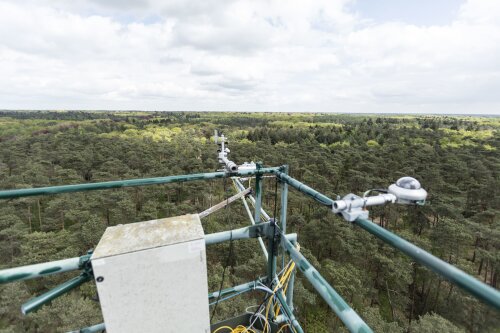Carbon sequestration at risk of destabilization in large regions of the world
A study led by researchers of the University of Antwerp and the Catalan Ecological and Forestry Applications Research Centre (CREAF) shows that vast natural areas in the world exhibit symptoms of destabilisation, implying that they could be approaching abrupt changes. The study shows the carbon sequestration capacity of the areas at risk might be compromised.
A study published this week in the renowned journal Nature shows clear signs of destabilising carbon uptake by land ecosystems in large regions of the world. According to the study, the Mediterranean Basin, Southeast Asia and the west coasts of North and Central America are among the areas most at risk of destabilisation. In the Mediterranean region, abrupt changes could turn forests into scrubland.
In particular, the difference between the CO2 taken up and the CO2 released into the atmosphere in these regions increasingly differs across years, with high plant productivity (and high carbon sequestration) in some years and low plant productivity (and low sequestration) in others. The study’s authors warn that such increasing variability indicates a risk of ecosystems becoming destabilised, spiralling away from their current situation and undergoing abrupt changes.
Forests could become scrublands
‘We have not only detected an increase in variability in these areas, but also an increase in their “memory”, which indicates that carbon uptake in one year is increasingly positively related to the previous year. A lower carbon uptake in one year is therefore becoming more likely to be followed by an even lower uptake the next year’, says the study’s lead author, Marcos Fernández, researcher at the University of Antwerp and CREAF. ‘These are clear symptoms of a possible destabilisation of the major ecosystems affected, something that might entail an abrupt change in the way they work and in their landscapes. In Mediterranean ecosystems, for example, forests could become scrublands that are unable to turn back into forests in the current climate.’
The study confirms that the areas most at risk of destabilisation have less forest cover and more cropland, are warmer, and have experienced greater rises in temperature variability, which could be related to an increase in extreme weather events, such as heatwaves and cold snaps. These areas include the Mediterranean region, eastern Africa, the west coasts of North and Central America, India and Pakistan, and Southeast Asia.
To carry out the study, the research team worked with global net ecosystem production data for the 1981–2018 period from CAMS and CarboScope, two global atmospheric inversion models. They also used net ecosystem production data from TRENDY, an ensemble of twelve dynamic global vegetation models.
Instability constrains carbon sequestration
The study shows that carbon sequestration capacity has been compromised in the regions with the greatest potential for destabilisation in recent years, whereas it has increased in areas where variability has declined, such as the Amazon and parts of central and northern Europe. ‘In the case of the Amazon, despite carbon having been lost on average over the study period, the losses are smaller and smaller because these systems have actually been increasing their carbon sequestration capacity’, explains research professor Josep Peñuelas from CREAF.
‘Being able to predict the carbon cycle is vital to combating climate change, because land ecosystems currently sequester about one-third of the human carbon emissions to the atmosphere. If their carbon uptake capacity declines, society will need to reduce its carbon emissions faster than is currently assumed’, remarks Sara Vicca (UAntwerp), one of the study’s authors. ‘While we do not yet know whether such abrupt changes will alter the climate or the carbon sequestration capacity of plants, a possible destabilisation of large regions of the biosphere complicates making predictions because it greatly increases variability.’

Fluxtower system to measure carbon exchange between forests and the atmosphere.